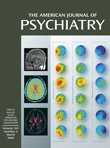The timing was perfect when we received the invitation to review a new (and to our knowledge unique) handbook for treating tobacco dependence, since we had recently inaugurated a smoking cessation clinic for psychiatric patients at our Veterans Administration (VA) facility and were having difficulty finding a “how to” manual for the rotating residents. We are happy to report that the search is over.
Our impression after a first reading of The Tobacco Dependence Treatment Handbook is overwhelmingly positive, which is not to say that some tobacco mavens whose career-driven Brownian motion was not influenced by Providence won’t experience conflicts. The book’s raison d’être (and call to war with the tobacco industry) is dramatically (and a bit redundantly) provided in the preface:
An addiction is not simply a free choice made by adults, as the tobacco industry propaganda would have us believe, but rather is tantamount to enticing young people into a personal prison for the rest of their lives—a concentration camp that eventually kills over 430,000 of its U.S. inmates each and every year by toxic exposure to lethal poisonous gases.
The preface also provides an overview of the book’s contents, which should enable a time-challenged reader with a specific area of interest to focus initially on the most relevant chapters, and ends with the book’s “single most important message—“that we must never give up on a current smoker until he/she has been helped to successfully maintain a tobacco-free life.”
There is something here for both those working within specialty smoking cessation programs and healthcare professionals new to the field. Experienced clinicians and clinical investigators who may already be familiar with the broad concepts will find extremely useful the excellent synthesis of current scientific literature to guide their efforts, the large number of rating scales for assessing the degree of tobacco dependence, and the discussion of systems issues that influence treatment. Primary care providers new to smoking cessation treatment should find this handbook indispensable for the detailed information it provides regarding the health consequences of smoking, methods for increasing patient motivation to quit smoking, and “nuts and bolts” techniques appropriate for general medical settings. A real strength of this handbook is the specificity of the information provided, which will likely enhance the skills of any clinician treating tobacco dependence or seeking guidance in making an appropriate referral to a smoking cessation treatment program.
Finally, we have three “pet peeves” (not intended to dissuade anyone from a wise decision to acquire a copy of the book). First, for those able to recall from their training years the quick reference handbooks that would fit in the pocket of a white coat, this large tome, which did not fit vertically into my standard VA hospital bookshelf, is more of a desk reference than a handbook. Second, physicians, especially those in primary care, may not be entirely comfortable with the emphasis on psychological and behavioral treatments; psychopharmacologic interventions are touched on throughout the book, but only one of nine chapters, “Pharmacotherapy for Smoking Cessation,” specifically addresses the topic. Lastly, the terms “nicotine addiction,” “nicotine dependence,” “tobacco addiction,” “tobacco dependence,” “smoking behavior,” and “smoking” are intentionally used interchangeably “to reflect the powerful biobehavioral mechanisms underlying nicotine addiction.” The problem with this blurring of terminology is that exogenous smokeless nicotine, despite its tendency to induce dependency, is likely, in the near future, to find clinical uses in the treatment of one of several conditions for which it is being studied, including ulcerative colitis, schizophrenia, bipolar disorder, Parkinson’s disease, Alzheimer’s disease, and Tourette’s syndrome. In fact, in 2001 one of us reviewed another excellent book summarizing the very promising research in these areas
(1). We hope that others will find this handbook as valuable as we and our residents have, so that the current printing will sell out quickly, allowing later editions to reflect the likely or, by that time, demonstrated usefulness of smokeless nicotine outside of smoking cessation treatment and remove the guilt by association.

